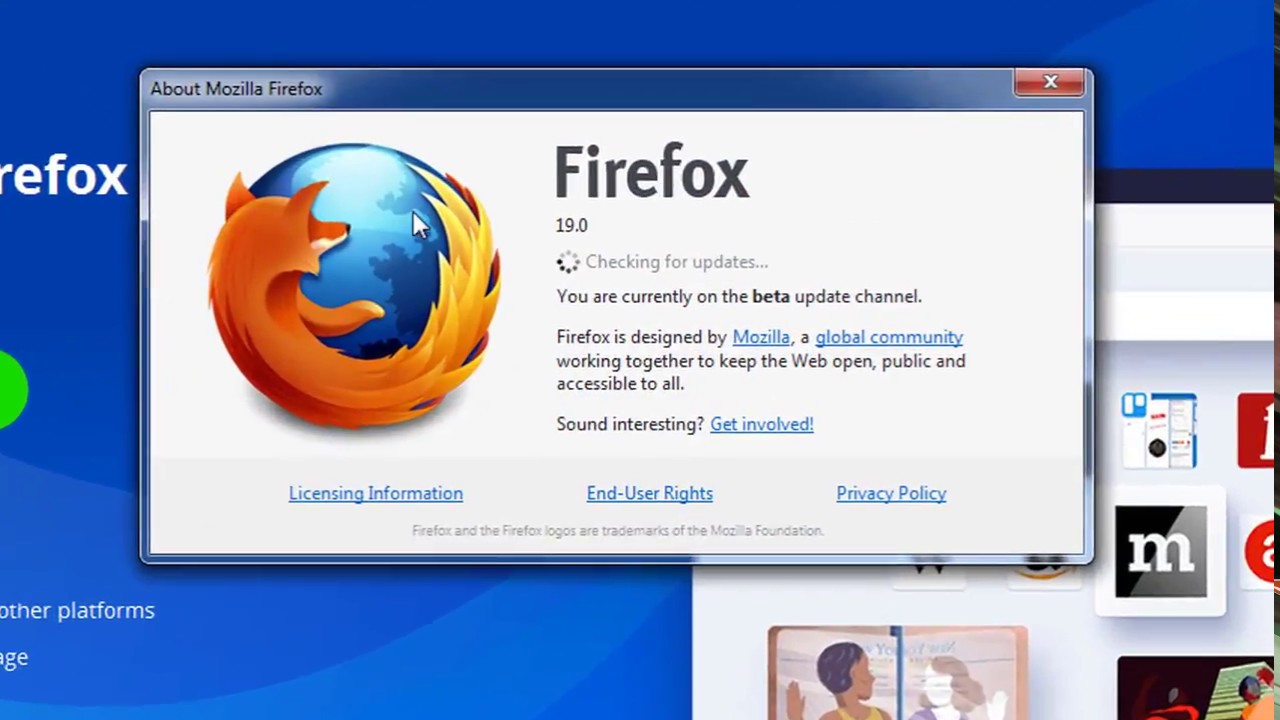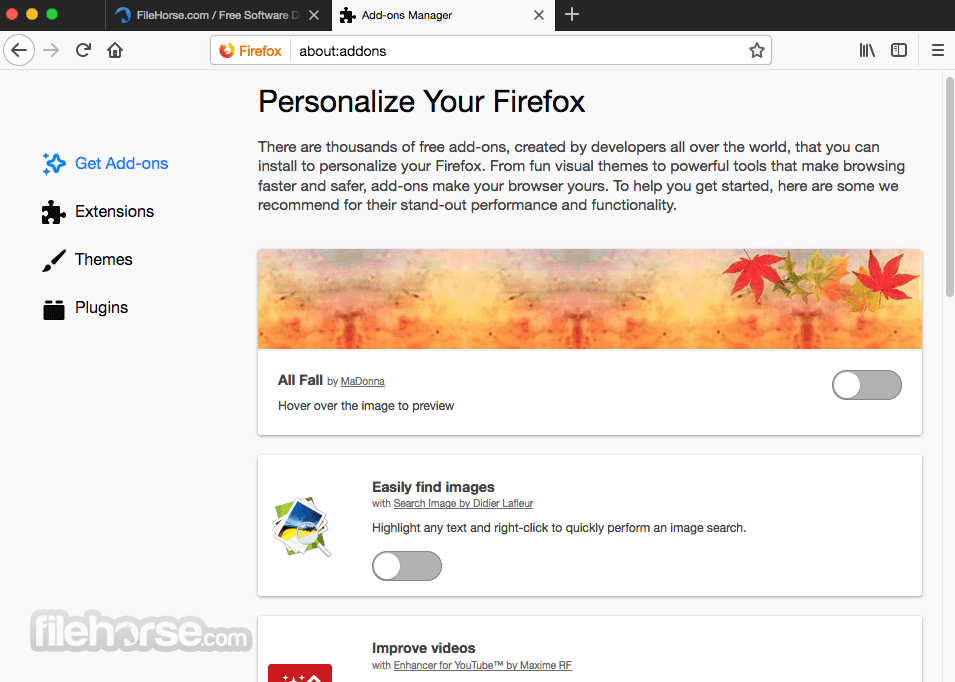Responsive design is the practice of designing a website so it looks and works properly on a range of different devices — particularly mobile phones and tablets as well as desktops and laptops.
The most obvious factor here is screen size, but there are other factors as well, including the pixel density of the display and whether it supports touch. Responsive Design Mode gives you a simple way to simulate these factors, to test how your website will look and behave on different devices.
To open the console in Firefox, use this keyboard shortcut: Cmd + Option +K (on a Mac) or Cmd +Shift +J (on Windows). As an alternative, you could right-click on the webpage and click 'Inspect Element,' and the developers window will appear. Click the 'Console' tab in that window. Trash the current Firefox application to do a clean install. Install the version that you have downloaded (3.6.28). Do not select to remove your personal data, your profile data is stored elsewhere in the Firefox Profile Folder, so you won't lose your bookmarks or other personal data. See also: Installing Firefox on Mac.
Safari is a graphical web browser developed by Apple, based on the WebKit engine. First released on desktop in 2003 with Mac OS X Panther, a mobile version has been bundled with iOS devices since the iPhone's introduction in 2007. Safari is the default browser on Apple devices. A Windows version was available from 2007 to 2012.
Toggling Responsive Design Mode
There are three ways to toggle Responsive Design Mode:
- From the Firefox menu: Select Responsive Design Mode from the Web Developer submenu in the Firefox Menu (or Tools menu if you display the menu bar or are on macOS).
- From the Developer Tools toolbox: Press the Responsive Design Mode button in the Toolbox's toolbar:
- From the keyboard: Press Ctrl + Shift + M (or Cmd + Opt + M on macOS).
Controlling Responsive Design Mode
With Responsive Design Mode enabled, the content area for web pages is set to the screen size for a mobile device. Initially, it's set to 320 x 480 pixels.

Firefox For Developers Mac Pro
Note: The device you select when in Responsive Design Mode and the orientation (portrait or landscape) is saved between sessions.
Information for the selected device is centered over the display. From left to right, the display includes:
- Name of the selected device - A drop-down list that includes whatever devices you have selected from the Device Settings screen.
- Screen size - You can edit the width and height values to change the device size by editing a number directly or using the Up and Down keys to increase or decrease the value by 1 pixels on each keypress or hold and Shift to change the value by 10.
- The mouse wheel changes the size values by 1 pixel at a time
- You can also change the device's screen size by grabbing the bottom-right corner of the viewport and dragging it to the size you want.
- Orientation (portrait or landscape) - This setting persists between sessions
Screenshots are saved to Firefox's default download location.
If you checked 'Screenshot to clipboard' in the Developer Tools Settings page, then the screenshot will be copied to the system clipboard.
- DPR (pixel ratio) - Beginning with Firefox 68, the DPR is no longer editable; create a custom device in order to change the DPR
- Throttling - A drop-down list where you can select the connection throttling to apply, for example 2G, 3G, or LTE
- Enable/Disable touch simulation - Toggles whether or not Responsive Design Mode simulates touch events. While touch event simulation is enabled, mouse events are translated into touch events; this includes (starting in Firefox 79) translating a mouse-drag event into a touch-drag event. (Note that when touch simulation is enabled, this toolbar icon is blue; when simulation is disabled, it is black.
On the right end of the screen, three buttons allow you to:
- Camera button - take a screenshot
- Settings button - Opens the RDM settings menu
- Close button - closes RDM mode and returns to regular browsing
The Settings menu includes the following commands:
- Left-align Viewport - when checked moves the RDM viewport to the left side of the browser window
- Show user agent - when checked displays the user agent string
- The final two options define when the page is reloaded:
- Reload when touch simulation is toggled: when this option is enabled, the page is reloaded whenever you toggle touch support.
- Reload when user agent is changed: when this option is enabled, the page isreloaded whenever the user agent is changed.
Reloading on these changes can be helpful because certain page behaviors would otherwise not be applied. For example, many pages check for touch support on load and only add event handlers if it is supported, or only enable certain features on certain browsers.
However, if you are not interested in examining such features (maybe you are just checking the overall layout at different sizes), these reloads can waste time and possibly result in the loss of productive work, so it is useful to be able to control these reloads.
Now when you change such settings for the first time, you are given a warning message that tells you these reloads are no longer automatic, and informed about how you can make them automatic. For example:
Developer Toolbox with RDM
You can show or hide the Developer Tools toolbox independently of toggling Responsive Design Mode itself:

While Responsive Design Mode is enabled, you can continue browsing as you normally would in the resized content area.
Device selection
Just above the viewport there is a label 'no device selected'; click this to see a list of device names. Select a device, and Responsive Design Mode sets the following properties to match the selected device:
- Screen size
- Device pixel ratio (the ratio of device physical pixels to device-independent pixels)
- Touch event simulation
Additionally, Firefox sets the User-Agent HTTP request header to identify itself as the default browser on the selected device. For example, if you've selected an iPhone, then Firefox identifies itself as Safari. The navigator.userAgent property is set to the same value.
The devices listed in the drop-down are just a subset of the devices that can be selected. At the end of the drop-down, there is an item labeled Edit list. Select this to see a panel containing all the choices, which enables you to check the devices you want to see in the drop-down. The set of devices, and the values associated with each device, are taken from https://github.com/mozilla/simulated-devices. You can also define a custom device, as described below.
Creating custom devices
You can create and save custom devices in Responsive Design Mode by clicking the Add Custom Device button. Each device can have its own:
- Name
- Size
- DevicePixelRatio
- User Agent String
- Touch Screen
Also, you can preview the properties of existing devices by hovering over the name in the device modal, where they display in a tooltip.
Network throttling
If you do all your development and testing using a very fast network connection, users may experience problems with your site if they are using a slower connection. In Responsive Design Mode, you can instruct the browser to emulate, very approximately, the characteristics of various different types of networks.
The characteristics emulated are:
Firefox For Developer Edition
- Download speed
- Upload speed
- Minimum latency
The table below lists the numbers associated with each network type, but please do not rely on this feature for exact performance measurements; it's intended to give an approximate idea of the user experience in different conditions.
| Selection | Download speed | Upload speed | Minimum latency (ms) |
|---|---|---|---|
| GPRS | 50 KB/s | 20 KB/s | 500 |
| Regular 2G | 250 KB/s | 50 KB/s | 300 |
| Good 2G | 450 KB/s | 150 KB/s | 150 |
| Regular 3G | 750 KB/s | 250 KB/s | 100 |
| Good 3G | 1.5 MB/s | 750 KB/s | 40 |
| Regular 4G/LTE | 4 MB/s | 3 MB/s | 20 |
| DSL | 2 MB/s | 1 MB/s | 5 |
| Wi-Fi | 30 MB/s | 15 MB/s | 2 |

To select a network, click the list box that's initially labeled 'No throttling':
Starting with Firefox version 49, Firefox requires Mac OS X 10.9 (Mavericks) or higher. Visit this Apple Support page to find your Mac OS version.
Firefox Developer Portable
If you're using an outdated version of Firefox on Mac OS X 10.8 (Mountain Lion) or earlier, the only way you can update Firefox to a secure version is to upgrade your Mac OS to a version that Apple supports. Visit this Apple Support page to learn more about upgrading your Mac.
While insecure versions of Firefox will continue to work on OS X 10.8 and earlier, using an up-to-date version of Firefox on a supported version of Mac OS will provide you with the best and safest user experience.